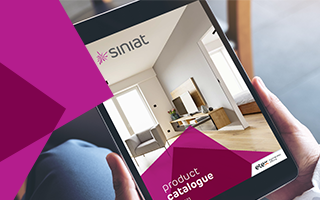In 2018, AS 5216:2018, the Australian Standard for the “Design of post-installed and cast-in fastenings in concrete” was introduced. The current version of the National Construction Code (NCC), references AS 5216.
What is AS 5216:2018?
AS 5216:2018, the Australian Standard for the “Design of post-installed and cast-in fastenings in concrete”, outlines the minimum requirements for the selection, design, and assessment of cast-in anchor channel and post installed fasteners for connecting steel to concrete.
To quote from the preface to the Standard: It provides “the minimum design requirements for fastenings used to transmit loads to concrete for safety-critical applications”.
AS 5216 supersedes SA TS 101:2015. AS 5216 has the status of an Australian Standard and SA TS 101 was published as a technical specification, but according to the Australian Engineered Fasteners and Anchors Council (AEFAC) the documents are similar in scope and content. AEFAC was a major driving force behind the development of both TS 101 and AS 5216.
Prior to TS 101, the design of anchor connections and evaluation of anchor products were not regulated under any Australian standards.
The current version of the National Construction Code (NCC), which came into effect in May 2019, references AS 5216.
Why was this standard necessary?
Before AS 5216 consumers only had manufacturers’ and suppliers’ information to rely on. This made it difficult and time-consuming to compare anchoring options.
The Standard draws a clear line between what is acceptable and what is not, and makes it much easier to choose the right fastener for a particular job.
Having one standard also makes the process of connecting steel to concrete much safer.
Is it a requirement to design to AS 5216?
Yes. The current version of the National Construction Code (NCC) 2019 came into effect in May 2019, and references AS 5216. It is however limited in scope. (See the next question.)
AS 5216 is referenced in the NCC as a deemed-to-satisfy solution (Clause B1.4(b)(iii) in Vol. 1 and Clause 3.0.4(e) in Vol. 2 of the 2019 NCC for the determination of structural resistance of materials.
What is the scope of AS 5216?
It is important to note that AS 5216 has a limited scope and does not address all performance requirements of the NCC. Other types of anchor design, including seismic design and fire design, are not covered by the Standard. Refer to the NCC for full details of the performance requirements.
The scope of AS 5216 is also limited to the design of fastenings to concrete in safety-critical applications, including post-installed (mechanical and chemical) and cast-in anchor channels.
“Safety critical” means that failure may have serious consequences, e.g. endanger human life or result in collapse or partial collapse of the structure. It is up to the responsible engineer to determine whether a certain application is safety critical or not.
If you are not sure if your fixing needs are safety critical, it is always better to use a product that complies with the Standard.
How do I know if fasteners comply with AS 5216?
In order for a fastener to be designed according to AS 5216, it must first have been tested and assessed (prequalified) in accordance with AS 5216 Appendix A.
Products that have a current European Technical Assessment/Approval (ETA) are compatible with AS 5216 via minor amendment to notation outlined in AS 5216 Appendix B.
Suppliers who claim compliance will have a testing and certification report available.
Does Siniat supply fasteners that comply with AS 5216?
We are so glad you asked!
Yes, Siniat has its own range of AS 5216 compliant screw anchors.
Siniat’s screw anchor range is designed for use with Siniat’s steel wall framing and ceiling frame systems and have been purpose made to provide a complete framing solution all from one manufacturer with full certification.
The Siniat screw anchor range is an integral part of achieving the full Siniat system performance, as such it is essential for the Siniat Warranty and engineering certification.
Siniat’s engineers will incorporate our screw anchor range in every project design we deliver, and a compliance certificate will be issued by Siniat. You can therefore rest assured that the screw anchors specified in the Siniat design document is fit for purpose for each project.
Contact us today by filling out the form below if you are interested in a presentation on the new screw anchor range, or to arrange for a site visit by one of Siniat’s engineers to discuss your fastening requirements.
References:
- FAQ, Australian Engineered Fasteners and Anchors Council
- Design Guidelines for Post-Installed and Cast-In Anchors in Australia for Safety-Critical Application







